
Bass Guitar – DI & Amp
Recording bass guitar is a commonly misunderstood process and one that’s often undervalued in the final mix. Mark Opitz shows us a simple technique that gets our bass guitar track pumping.
When I record electric bass guitar I always like to capture two sources: one through a mic positioned in front of a bass cabinet and the other via a DI – which is a pretty typical combination really. However, getting these two sounds to combine well is the trick. If I’m going to analogue tape I always sub-mix these two sources to one track, rather than keeping them separate. The reason for this is entirely a practical one: you can’t afford to tie up tracks of analogue tape when there are only so many to go around. But if you’re going to analogue tape, make sure you check your phase before you commit the combined signal to the reel.
However, the digital domain (where most of us record these days) is a different animal, which generally doesn’t suffer from this track-count restriction. When I record using ProTools HD, for example, where there are lots of tracks at my disposal, I generally keep the DI and the bass amp signals separate, and the reason for this is two-fold. Firstly, the separation allows me better control of the two discrete signals during mixdown, and secondly it enables me to blow up the two waveforms and fine-tune their phase alignment. This is critical to achieving a solid and coherent bass guitar track in the final mix.
As I discussed in my last tutorial on guitar amp recording [Issue 38], it’s vitally important to investigate the in-phase characteristics of the recorded bass signals visually – as waveforms. If your mics are positioned correctly in an X/Y pattern – for electric guitar or any other instrument – the in-phase nature of the recorded signals are usually okay, but what sometimes happens with amp/DI combinations is that phase alignment problems can work against the production of full-range sound due to the fact that the DI signal is arriving at the recording device slightly ahead of the amplified signal (depending on the distance of the mic from the speaker). When these two ‘versions’ of the bass are mixed together, their phase (or timing) anomalies can weaken the sound, wash it out, making it sound thin and ugly. But with the power of digital editing at our disposal, the accurate re-alignment of these two waveforms can be addressed, producing a full and powerful bass sound.
The DI component of recording a bass guitar is very important to the final bass sound. Unlike recording the DI’d sound of an electric guitar – which I record primarily to provide a clean (no distortion or other effects) digital waveform for checking phase alignment at a later date – the DI component of a bass guitar is predominantly focused on capturing a fairly clean sound that’s full range, and with a good DI that’s entirely possible. What’s more, the DI has one major advantage over a mic – it’s obvious immunity to ‘spill’ and the inadequacies of room acoustics. A direct signal from the source is a great advantage of using any electric instrument, and one that can only be captured ‘on the spot’. If it’s not captured during tracking, the opportunity is lost forever, so record it while you have the chance! You may not always need it at the end, but a good engineer never misses his or her chance to capture a sound.


Phase (timing) anomalies can weaken the sound, wash it out, making it sound thin and ugly
THE BASS AMP COMPONENT
When I’m miking a bass amp I prefer not to have it in the same room as the drums and everything else if possible. Ideally the amp needs to be isolated. For instance, at Rhino [where Mark most notably recorded INXS – Ed.] we used to put the bass amp in the airlock, but wherever you can obtain some isolation (provided the space is not too reverberant), that’s where the amp should go. If you can’t dedicate a room to the bass amp, improvise a space using whatever structure you can to provide the amp some isolation. Where the bass rig is unavoidably exposed to other unwanted sounds, a good mic to consider using (which was one of the first mics I ever used in the studio) is the EV RE20. As you can see from the photos, an RE20 is a good choice when the area surrounding the amp is live with unwanted sounds or ugly reverberation because it sports a good deal of anti-phase tubing down its sides. What this anti-phasing tubing does (getting back to phase again) is provide great rejection of the surrounding environment, making it a very ‘focused’ microphone.
The RE20 behaves almost like a shotgun mic, and, in fact, it’s used in this role regularly. This is why a lot of people use them for speech as well – for voiceovers and radio broadcast – because of their ‘deafness’ to off-axis sounds. But the main reason I regularly use an RE20 on bass amps is because this shotgun-like rejection allows me to pull the mic back from the amp some distance, to where the deeper bass frequencies can be found and captured. As we all know, the physical lengths of bass frequencies are much greater than top-end frequencies. So in order to capture them you need to allow the mic a bit more breathing space from the speaker. But, of course, with most mics, when you do this, the signal loses focus and effectively becomes a room mic rather than a ‘front end’ mic. The RE20, however, provides you with the luxury of this extra breathing space without the mic becoming too ‘roomy’. It’s particularly good if you’re recording a thumping rock bass that’s really pumping away – it provides the ‘focus’ of a close-in mic with the low frequency capture of a room mic, and gets the capsule further away from the high sound pressure levels. A conventional cardioid pattern front-address microphone like a Neumann U47 FET, for example (another of my favourite bass cabinet mics), would be hearing far more of the room component if positioned in this situation three feet from the amp. That’s okay if you’re after more ‘room’ in your sound, but it’s no good if the spill is unacceptable or if you’re trying to capture a tighter, drier bass amp sound.
The other thing to note about the RE20 is that the nature of its cage allows you to be close to the mic without suffering from proximity effect. So you don’t get that bottom end build-up and thickness. That’s one of the reasons why it’s so popular for voice. I particularly like the RE20 for bass if someone’s using a pick. For a finger-style bassist it’s also good, but again, in that situation, I always combine the mic’d up amplified signal with a full DI sound.
U47 – FET UP
If I’m working with a player who has nice, soft jazz finger-style, nothing beats your good ol’ U47 FET. Again, you can have it off-centre or facing directly at the speaker cone, depending on how much top end you want in your sound. For a slightly duller, fuller sound, just turn the mic slightly off-axis so it’s not facing directly into the centre of the speaker. It all depends on what sound you’re trying to achieve.
But regardless of the tone you’re after, keep the mic in front of the centre of the speaker cone (or the best speaker cone, depending on whether there’s more than one in the cabinet). I never place the mic eccentrically to the bass speaker, and by this I mean, I only change the angle that the mic is facing, never where the mic and stand are placed relative to the cabinet. The mic is always dead centre. It’s only the angle the mic creates with the speaker that changes (see Fig. 1). If I’m after a clear and articulate sound with plenty of top end, the mic faces directly at the amp. If I’m trying to capture a softer, less clinical tone, I’ll face the mic at an angle, twisting it back and forth like a searchlight until the right tone is achieved.
Of course, another great microphone to use in this situation is a ribbon mic, again in conjunction with a DI. Ribbons provide a softer sound with less focus on the mechanics of the instrument and more on the notes they play, but if you’re going to be using them on bass you’ve got to be careful. Ribbons are very delicate mics, particularly the older ones like RCAs, so it’s unwise to put them in front of amps cranked up to 11. They’re also lovely on acoustic bass as well, as are most condensers, but my standard setup is nearly always an RE20 or a FET 47, always recorded in conjunction with the DI.
ALL A BIT BAFFLING
The setups shown in these photos are free of baffling so we can show you the mic-on-amp relationships. But, in a real recording situation, isolation is important. In most recording situations, unless it’s live, I’d most definitely be isolating the guitars and bass, obviously depending on the feel of the music. In a recording studio environment what I often do is isolate guitar amps and just have everyone standing around the drum kit – everyone in the same room – to make sure everyone feels energised. I like the bass player to be looking at the drummer while he’s playing – always – to get the rhythm section really firing.
Bass is a pretty simple instrument, and one that’s often relegated to ‘second fiddle’ during a recording session by the drums and electric guitars. But it’s no less important than either of them and it’s equally important to capture everything from a bass performance as it’s happening. Like any instrument, don’t wait until mixdown to get the sound firing, capture it as it happens and you’ll always be better off.




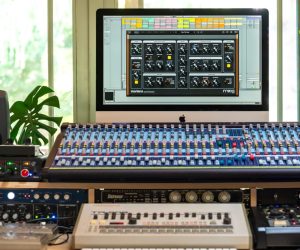



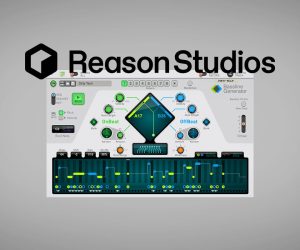
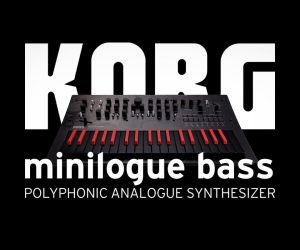


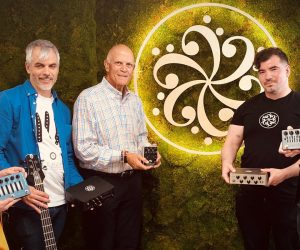

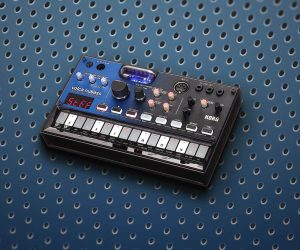


RESPONSES